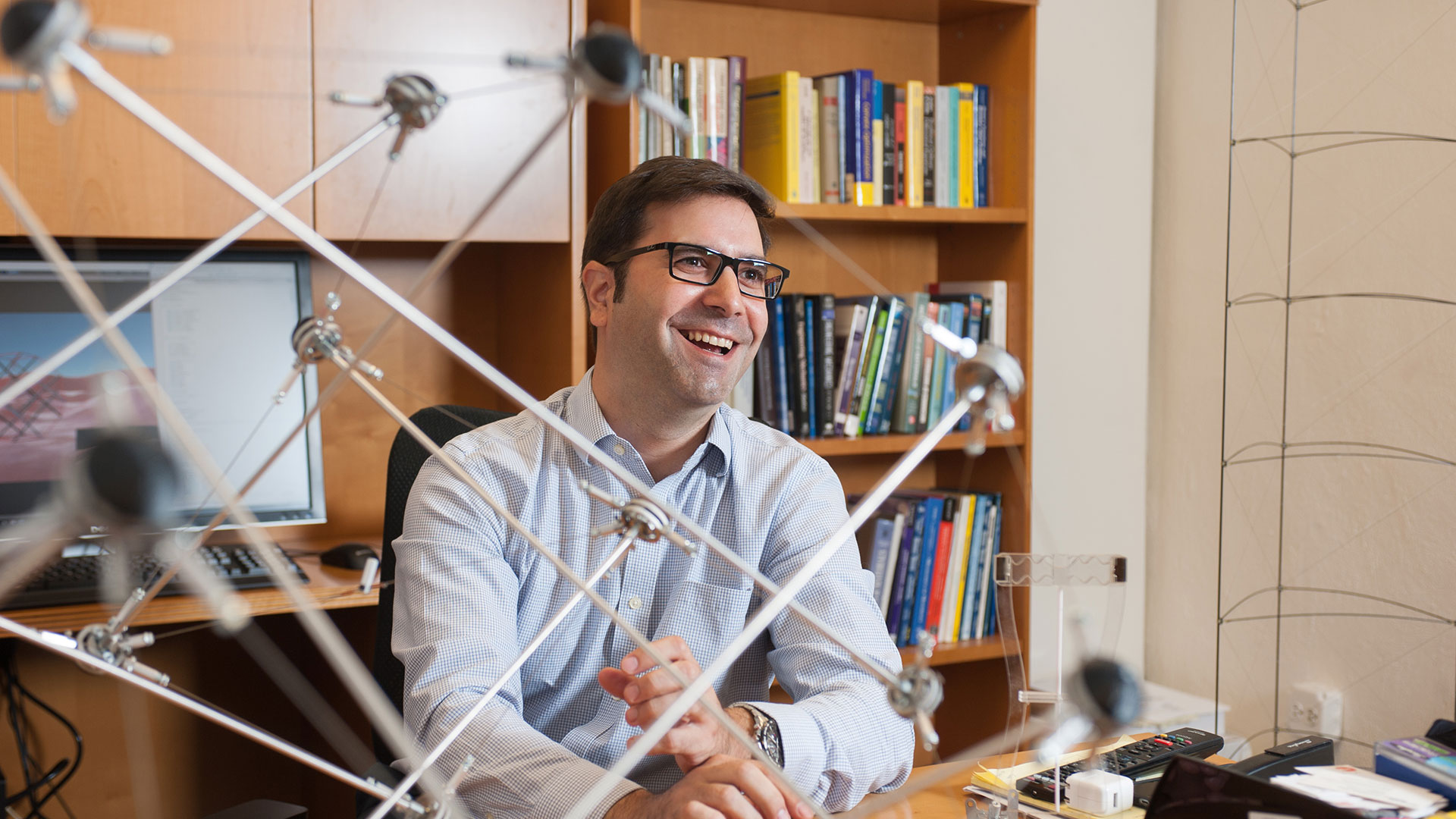
In the Classroom with Julian Rimoli
Julian Rimoli is an assistant professor in Georgia Tech’s Daniel Guggenheim School of Aerospace Engineering. When he was little, he shared a dream with many other kids who grew up watching space missions: He wanted to be an astronaut.
“People thought I was crazy because I was in Argentina – in a small town,” he joked.

Rimoli was born to a family of Italian immigrants and raised in Junín, Argentina, a small town three hours west of the capital, Buenos Aires. He earned an aeronautics engineering degree at Argentina’s Universidad Nacional de La Plata in 2001. In 2004, he moved to the United States for graduate studies at Caltech, earning his M.Sc. in aeronautics in 2005 and his Ph.D. in aeronautics in 2009. After conducting research and supervising graduate students as a postdoctoral associate at the Department of Aeronautics and Astronautics at MIT for nearly two years, he came to Georgia Tech in 2011.
“I really like this place,” Rimoli said. “I haven’t been able to find another place with the level of energy we have on this campus. The students are very active, and they always have ideas and want to participate in research. The faculty is the same — lots of people are willing to collaborate all the time.”
CLASSROOM STRATEGIES
When teaching, Rimoli says he tries to reconstruct the process and build on the story.
“Each lecture has its own story,” he said. “I spend a lot of time thinking on the concept of how something comes to be the way it is.”

Rimoli said intuition, in addition to the necessary technical knowledge, is very important in order for students to get the physical understanding of what’s going on. He said it can be frustrating to realize that the students are not understanding what he is trying to convey.
“When I perceive that students are not understanding, I think about how to fix it the next time I teach it,” he said. “But at that moment, I try to come up with new ways of explaining, and try different examples or angles.”
He also tells his students that it’s okay if they don’t understand everything in class.
“In the classroom, you get the big picture and, hopefully, you get a good set of notes to help you study. But at the end of the day, there’s no way around studying,” said Rimoli, whose teaching prowess has been recognized through awards such as the Lockheed Dean’s Award for Excellence in Teaching and the Goizueta Junior Faculty Professorship.
REALLY REACHING THE STUDENTS
Rimoli, who teaches a number of undergraduate and graduate courses in aerospace engineering, is excited by the exchange of energy in the classroom.
“The moment I walk into the classroom, I get energy. I give them energy, and they give me energy back,” he said. “It always helps if the students are engaged, and it takes time to build a relationship with the class. The classroom dynamics are not the same the first week of class than at the end of the semester.”
Rimoli said the excitement level varies according to what he is teaching.
“When I teach an advanced graduate level class, what excites me is that it really forces me to learn,” he said. “I have to prepare for these smart Ph.D. students who are going to ask tough questions. I want to — as much as possible — know the answer or be ready to think about the answer on the spot. It’s a very stimulating intellectual challenge.”
When teaching statics, an undergraduate course, Rimoli faces a different set of challenges.
“What I enjoy is the challenge of how to teach what — to me — is obvious,” he said. “I have to put myself in the mindset of the students, and try to remember where I was [at their age].”
He also has to be mindful about actively expressing the commitment he has to his students. Rimoli said students are really good at reading the commitment of the faculty.
“I think students appreciate the commitment,” he said. “They may or may not like your teaching style, but if you are committed, they will respect it.”
When he was teaching his students about trusses, he took the time to create an app called “Truss Me!” His committing to that extra step to provide a virtual testing environment for his students allowed them to improve their intuition on trusses. The app has had 120,000 downloads in over 140 countries, including 36,000 downloads from educational institutions.
But, Rimoli said that acknowledgement of faculty commitment sometimes doesn’t come until the end of the semester.
“The best reward is on the last day of class when a student shakes your hand and says, ‘I enjoyed your class.’”


